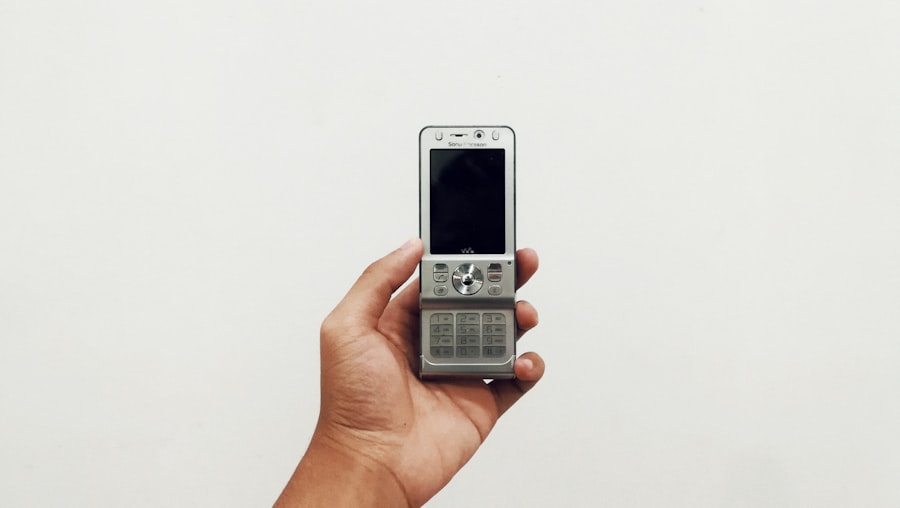MPEG-2, or Moving Picture Experts Group Phase 2, is a standard for compressing digital video and audio. Developed in the early 1990s, it has become a cornerstone of digital television broadcasting, DVD video, and various streaming applications. The format is designed to provide high-quality video while maintaining manageable file sizes, making it ideal for both storage and transmission.
MPEG-2 achieves this through a combination of lossy compression techniques, which reduce file size by eliminating some data deemed less critical to the overall quality of the video. This allows for efficient use of bandwidth and storage space, which is particularly important in environments where resources are limited. The technical specifications of MPEG-2 include support for interlaced video, multiple audio tracks, and various resolutions, making it versatile for different applications.
It can handle resolutions up to 4K and supports a variety of frame rates, which is essential for accommodating different types of content, from movies to live broadcasts.
The format also includes features such as error resilience and the ability to handle multiple audio and subtitle streams, which enhances the viewing experience. Despite the emergence of newer codecs like H.264 and HEVC (H.265), MPEG-2 remains widely used due to its compatibility with legacy systems and its established presence in the industry.Key Takeaways
- MPEG-2 is a widely used video compression format that is compatible with many devices, including iPhones.
- Converting MPEG-2 to iPhone-compatible format can be done using various software and online tools, ensuring seamless playback on the device.
- Third-party apps like VLC and Infuse can be used to play MPEG-2 files on iPhone, providing additional features and customization options.
- Transferring MPEG-2 files to iPhone can be done through iTunes, iCloud, or third-party file transfer apps for easy access and playback.
- Streaming MPEG-2 to iPhone is possible using media server apps and network streaming protocols, allowing for real-time playback without the need for file transfer.
Converting MPEG-2 to iPhone-compatible format
To enjoy MPEG-2 content on an iPhone, users often need to convert the files into a format that is compatible with Apple’s ecosystem. The iPhone primarily supports formats such as H.264 and HEVC for video playback. Converting MPEG-2 files involves transcoding them into one of these supported formats, which can be accomplished using various software tools available on both desktop and mobile platforms.
The conversion process typically involves selecting the desired output format, adjusting settings such as resolution and bitrate, and then initiating the transcoding process. Several software options are available for converting MPEG-2 files. For instance, HandBrake is a popular open-source tool that allows users to convert video files into a variety of formats suitable for iPhone playback.
Users can select presets specifically designed for iPhone, ensuring optimal settings for video quality and file size. Another option is FFmpeg, a powerful command-line tool that provides extensive options for video conversion. While it may require more technical knowledge to use effectively, FFmpeg offers unparalleled flexibility in terms of customization.
By converting MPEG-2 files into a compatible format, users can ensure smooth playback on their iPhones without encountering compatibility issues.
Using third-party apps to play MPEG-2 on iPhone

For those who prefer not to convert their MPEG-2 files, there are several third-party applications available that can directly play these files on an iPhone. These apps are designed to handle a wide range of video formats, including MPEG-2, without the need for conversion. VLC Media Player is one of the most well-known options in this category.
It supports virtually all video formats and offers a user-friendly interface that makes it easy to navigate through media libraries. VLC also includes features such as subtitle support and customizable playback settings, enhancing the overall viewing experience. Another noteworthy application is Infuse, which is specifically designed for iOS devices.
Infuse not only supports MPEG-2 playback but also offers advanced features like streaming from network shares and cloud services. Its sleek design and intuitive controls make it a favorite among users who want a seamless media experience on their iPhones. Additionally, Infuse provides automatic metadata fetching, allowing users to organize their media libraries efficiently.
By utilizing these third-party apps, iPhone users can enjoy their MPEG-2 content without the hassle of conversion while benefiting from additional features that enhance playback.
Transferring MPEG-2 files to iPhone
| File Size | Transfer Time | Transfer Method |
|---|---|---|
| 1 GB | 5 minutes | iTunes Sync |
| 2 GB | 10 minutes | Cloud Storage |
| 3 GB | 15 minutes | USB Cable |
Once you have your MPEG-2 files ready for playback—whether converted or intended for use with a third-party app—the next step is transferring them to your iPhone. There are several methods available for this process, each with its own advantages depending on user preferences and available resources. One common method is using iTunes or Finder (on macOS Catalina and later) to sync files directly to the device.
Users can add their MPEG-2 files to their iTunes library or Finder window and then sync them with their iPhone through a USB connection. Alternatively, cloud storage services like Google Drive or Dropbox offer a convenient way to transfer files wirelessly. By uploading the MPEG-2 files to a cloud service from a computer, users can then access those files on their iPhones through the corresponding app.
This method eliminates the need for physical connections and allows for easy access to media files from anywhere with an internet connection. Additionally, some third-party apps like VLC allow users to transfer files over Wi-Fi by entering an IP address into a web browser, making it easy to upload videos directly from a computer without needing cables.
Streaming MPEG-2 to iPhone
Streaming MPEG-2 content directly to an iPhone is another viable option for users who want to avoid downloading large files or transferring them manually. Several streaming solutions can facilitate this process, allowing users to access their media libraries remotely. One popular method is using a media server application like Plex or Emby.
These applications can transcode video files on-the-fly, converting them into a compatible format for streaming over the internet or local network. Plex, for instance, organizes your media library and streams content seamlessly to various devices, including iPhones. Users can set up a Plex Media Server on their home computer or NAS (Network Attached Storage) device and access their MPEG-2 files from anywhere using the Plex app on their iPhones.
This setup not only provides access to MPEG-2 content but also allows users to enjoy other media types without worrying about compatibility issues. Streaming offers flexibility and convenience, especially for those who frequently switch between devices or travel.
Editing MPEG-2 on iPhone

Editing MPEG-2 files directly on an iPhone presents unique challenges due to the format’s complexity and the limitations of mobile editing applications. However, there are several apps available that allow users to perform basic editing tasks on their videos once they have been converted into a more manageable format like H.264 or HEVApplications such as iMovie provide intuitive interfaces for trimming clips, adding transitions, and incorporating audio tracks into videos. For users who prefer more advanced editing capabilities, apps like LumaFusion offer professional-grade features that rival desktop editing software.
LumaFusion supports multi-track editing, allowing users to layer audio and video tracks seamlessly while providing tools for color correction and effects application. While direct editing of MPEG-2 files may not be feasible due to compatibility issues, converting these files beforehand enables users to leverage powerful editing tools available on the iPhone.
Tips for optimizing MPEG-2 playback on iPhone
To ensure optimal playback of MPEG-2 content on an iPhone, several tips can enhance the viewing experience. First and foremost, converting MPEG-2 files into formats that are natively supported by the device—such as H.264 or HEVC—can significantly improve performance and reduce playback issues like stuttering or lagging. When converting files, adjusting settings such as resolution and bitrate can also help balance quality with file size, ensuring smooth playback without overwhelming device resources.
Another important consideration is managing storage space on the iPhone. High-quality video files can consume significant amounts of storage; therefore, regularly reviewing and deleting unnecessary files can help maintain optimal performance. Additionally, keeping the device’s software updated ensures compatibility with the latest codecs and playback enhancements provided by Apple.
Finally, using high-quality third-party apps that are optimized for video playback can further enhance the experience by providing features like hardware acceleration and customizable playback settings.
Legal considerations for MPEG-2 on iPhone
When dealing with MPEG-2 content on an iPhone—or any device—it’s crucial to be aware of legal considerations surrounding copyright and licensing issues. MPEG-2 itself is a patented technology; therefore, using it in commercial applications may require licensing fees or adherence to specific regulations set forth by patent holders. For personal use, however, individuals typically have more leeway in how they manage their media libraries.
Users should also be cautious about sharing or distributing MPEG-2 content that they do not own or have explicit permission to use. Piracy laws vary by country but generally prohibit unauthorized distribution of copyrighted material. This includes sharing MPEG-2 files over peer-to-peer networks or uploading them to public platforms without proper rights.
Understanding these legal frameworks is essential for anyone looking to enjoy or share MPEG-2 content responsibly while avoiding potential legal repercussions associated with copyright infringement.
If you are looking to learn how to get MPEG 2 on your iPhone, you may want to check out the article on Get iPhone Info website. This article provides detailed instructions on how to download and install MPEG 2 on your iPhone, allowing you to enjoy high-quality video playback on your device. Be sure to visit their website for more helpful tips and tricks for getting the most out of your iPhone.
FAQs
What is MPEG-2?
MPEG-2 is a widely used video compression standard developed by the Moving Picture Experts Group. It is commonly used for digital television and DVD video.
Can iPhone play MPEG-2 files?
By default, iPhone does not support playback of MPEG-2 files. However, there are third-party apps available on the App Store that can enable MPEG-2 playback on iPhone.
How can I get MPEG-2 on my iPhone?
To play MPEG-2 files on your iPhone, you can use a third-party video player app that supports MPEG-2 playback. These apps can be found on the App Store and may require a one-time purchase.
Are there any free options to play MPEG-2 on iPhone?
While there are paid apps that support MPEG-2 playback on iPhone, there may also be free apps available on the App Store that offer this functionality. It’s recommended to read user reviews and check the app’s features before downloading.
Can I convert MPEG-2 files to a compatible format for iPhone?
Yes, you can use video conversion software to convert MPEG-2 files to a format that is compatible with iPhone, such as MP4. There are many free and paid video conversion tools available for this purpose.










